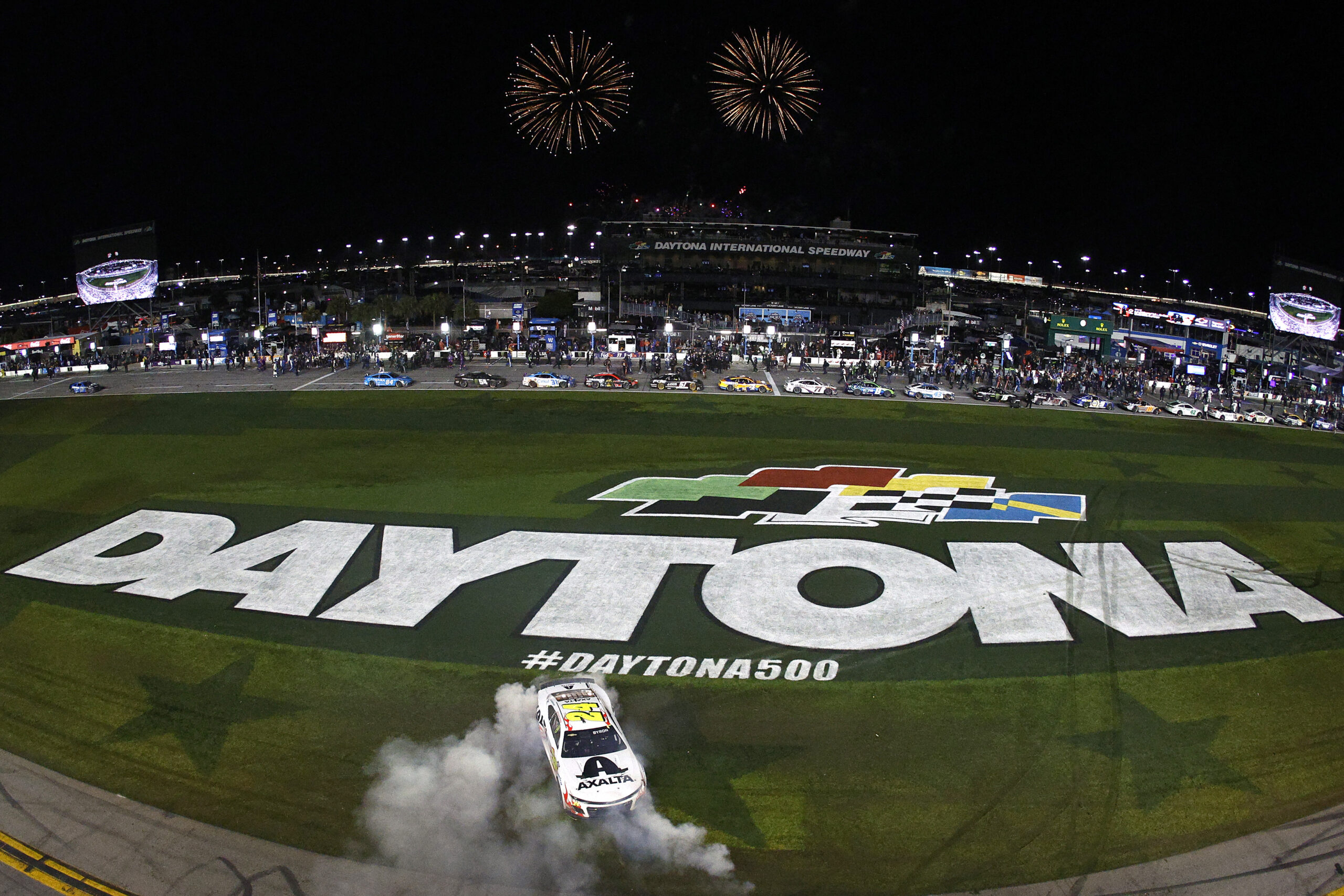
Contrary to some stereotypes, NASCAR does more than just “Race around in circles”. While, yes, the majority of the schedule is contested on ovals, each oval is unique in its own way, and NASCAR also treks out to road courses every now and again. What are the different types of race tracks that the NASCAR Cup Series races at?
The different track type names were originally based on track length, and they are pretty self-explanatory. These names are based on what NASCAR considers them as on NASCAR.com.
Short Tracks: Bristol, Iowa, Martinsville, North Wilkesboro, Richmond
Short tracks are defined as any race track less than 1.0 miles in length. Due to the short length, these races are defined by close racing and lots of contact between the cars. The length also means that these are the slowest race tracks on the circuit.
NASCAR raced primarily on short tracks in its’ early days, so tracks like Bristol, Martinsville, North Wilkesboro and Richmond are some of the oldest on the circuit. Iowa is an anomaly as the newest track on the circuit.
Intermediate Tracks: Atlanta*, Charlotte, Gateway, Darlington, Dover, Homestead-Miami, Kansas, Las Vegas, Michigan, Nashville, New Hampshire*, Phoenix*, and Texas
An intermediate track is technically defined as any race track between 1.0 and 2.0 miles in length. This track type is defined by high speeds, but, the longer length means the cars are more spread out. While these tracks were around throughout the early days in NASCAR, they grew in prominence at both the start of the modern era in 1972 and during NASCAR’s boom in the late 1990s and early 2000s.
Four race tracks on this list are a bit debatable. Phoenix, New Hampshire, and Dover are all at or near 1.0 miles in length, but, Phoenix and New Hampshire in particular tend to produce a product similar to short tracks. Atlanta is the exact length of an intermediate, but, the high banking in the turns means that it races similarly to a superspeedway. Speaking of which…
Superspeedways: Daytona and Talladega
You know a track is big, bad, and fast when NASCAR has to create an entire rules package for it specifically designed to reduce speeds. That’s the case at Daytona and Talladega. Both tracks are 2.5 and 2.66 miles in length respectively with more than 30 degrees of banking. The result, drivers are flat to the floor all the way around.
These two tracks were created for one simple reason, to figure out just how fast a car could go. However, speeds got a bit too high in the late 1980s, and NASCAR started to reduce speeds at these race tracks. The unintended consequence was the massive packs of cars that create some of the most exhilarating yet sometimes sloppy races in NASCAR. Read the article below for more on the history of the slowdown at these tracks.
Road Courses: Charlotte Roval, Chicago Street Course, COTA, Sonoma, Watkins Glen
Road courses are what most of the motorsports world would consider “normal” race tracks. These are race tracks where drivers turn right and left. Speeds and lengths vary from track to track, but a road course race is pretty self-explanatory. NASCAR has historically held maybe one or two road course races per year, but that total has increased in the 2020s to as many as 7 per year.
There are some minor subcategories within road courses, but, they still produce the same product. COTA, Sonoma, and Watkins Glen are all purpose-built road courses just like most other tracks on the schedule. The Charlotte Roval is a combination of the Charlotte Oval and a road course cut out of the infield. The Chicago Street Race is contested on the actual City Streets of Chicago
Disputed/In a League of their Own: Indianapolis and Pocono
Indianapolis Motor Speedway and Pocono Raceway are both unique in their design. They are both 2.5 miles in length, but, their banking means they do not race like a superspeedway. The product is similar to an intermediate, but, the length of the track means that strategy plays out like a road course race.
These two tracks are truly in a league of their own. There’s no true way to define what these tracks are because none of it fits into the normal definition of a NASCAR race track. What fans will see here is not like anything they see at any other track.
Separating these race tracks based on what rules package they use generally tends to group these tracks based on what type of racing we see. For the most part, the rules package fits in line with the length of the track, but there are a few exceptions.
Phoenix and New Hampshire are considered intermediate tracks by length, but, they use the short track rules package. The low banking at both of these tracks means the speeds are much closer to that of a short track, so, NASCAR considers them a short track for rules package purposes.
Bristol uses the speedway rules package even though it is the 2nd shortest track in NASCAR. Bristol is famous for its’ high banks, which create higher speeds, necessitating the speedway rules package. This is the same reason why Dover uses the Speedway package despite being the same length as Phoenix.
Atlanta uses the superspeedway aero package because it drives like a superspeedway. The high banking means the drivers try to race full throttle around the entire track, just like Daytona and Talladega. For all intents and purposes, Atlanta is a superspeedway.
Indianapolis and Pocono both use the speedway rules package. While these tracks are incredibly unique, the nuts and bolts of the racing are most similar to an intermediate race track. Still, it’s hard to define these tracks as intermediates.
These are all of the different track types in NASCAR. While there are some general rules of thumb, there are some fuzzy lines as well.
